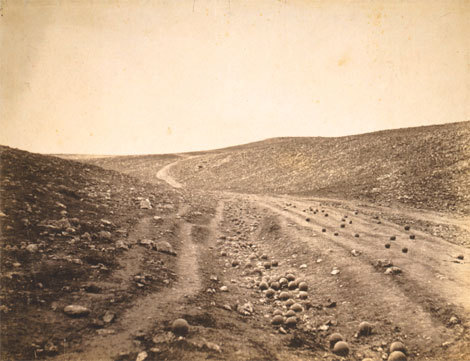The work we create as artists has a purpose, it has a meaning and therefore it has an audience. By understanding the role of the audience we can focus the visual communication of the piece. The function and the meaning are affected by who the audience is. A piece of landscape photography could be aimed at anyone but if we research the location of the landscape we may discover that the area was the place of war. Such as Rodger Fenton's 'Valley of the Shadow of Death' However a landscape photograph could also be used in advertising such as for the Volvo XC90 by Darran Ree's, which advertises the car as being off-road, dependable. So by understanding the audience we can interpret the function more accurately. Audience is vital to visual communication they effect how work functions how works are developed and there content.


Notion of Inspiration
As artists it is important to analyse the target audience using primary and secondary research. Take interviews, questionnaires and find out how the audience would respond, what they enjoy, what they need ect. Also find out what has been done before, what worked, what doesn't. Research not only gives us a deeper understanding of how best to visually communicate, but it also inspires us. The more we research the greater knowledge base we create, which leads to interesting pieces of work. For and idea to appear it has to come from somewhere we have to seek out pieces of information, images, words, objects. Anything and everything can help, the simplest thing can trigger a whole host of ideas, mind maps. One idea sprouts which forms another, which forms another ect. Research is vital to creation, " Inspiration exists, but it has to find us working." -Pablo Picasso.
As artists it is important to analyse the target audience using primary and secondary research. Take interviews, questionnaires and find out how the audience would respond, what they enjoy, what they need ect. Also find out what has been done before, what worked, what doesn't. Research not only gives us a deeper understanding of how best to visually communicate, but it also inspires us. The more we research the greater knowledge base we create, which leads to interesting pieces of work. For and idea to appear it has to come from somewhere we have to seek out pieces of information, images, words, objects. Anything and everything can help, the simplest thing can trigger a whole host of ideas, mind maps. One idea sprouts which forms another, which forms another ect. Research is vital to creation, " Inspiration exists, but it has to find us working." -Pablo Picasso.
Bibliography
http://jboultondesign.wordpress.com/
http://www.andrewgrahamdixon.com/archive/readArticle/442
http://www.thefstopmag.com/?p=386

No comments:
Post a Comment